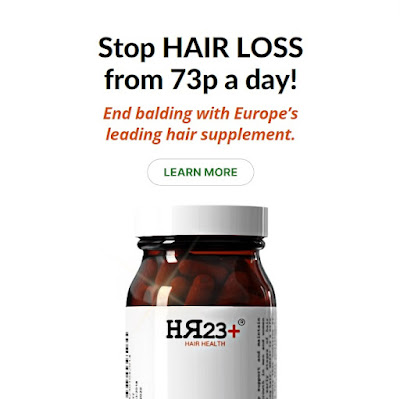What is Low Light Laser Therapy, and is it effective for treating hair loss?
Low-level laser therapy (LLLT), also known as cold laser therapy or photobiomodulation, is a non-invasive treatment method used to promote hair growth. It involves using low-power lasers or light-emitting diodes (LEDs) to stimulate cellular activity, particularly in hair follicles.
Here's how it works and what you need to know about its application for hair growth:
The effectiveness of low-level laser therapy (LLLT) for hair growth is a topic of ongoing research and debate. While some studies and anecdotal evidence suggest that LLLT can promote hair growth and improve hair density, the results are variable among individuals, and more research is needed to establish its efficacy definitively.
Several clinical trials and systematic reviews have investigated the effectiveness of LLLT for hair growth. While some studies have reported positive outcomes, others have found no significant difference between LLLT-treated groups and control groups.
Here are some key points regarding the effectiveness of LLLT for hair growth:
Stimulation of Hair Follicles
LLLT works by increasing blood flow to the scalp and stimulating metabolism within hair follicles. This stimulation can lead to the production of healthier hair shafts and an increase in the number of actively growing hair follicles.
Cellular Effects
The light energy emitted during LLLT penetrates the scalp and is absorbed by the mitochondria, the energy-producing powerhouse of cells. This stimulates cellular activity and promotes the production of ATP (adenosine triphosphate), which is essential for cellular function and hair growth.
Clinical Evidence
While there is some evidence supporting the efficacy of LLLT for hair growth, results can vary among individuals, and more research is needed to fully understand its mechanisms and effectiveness. Some studies have shown positive outcomes in promoting hair growth and improving hair density, while others have found no significant benefit.
Treatment Devices
LLLT devices for hair growth are available in various forms, including handheld combs, caps, helmets, and in-office treatments administered by professionals. These devices emit specific wavelengths of light, typically in the red or near-infrared spectrum, believed to be most effective for stimulating cellular activity.
Treatment Regimen
The treatment regimen for LLLT typically involves regular sessions over several months to achieve optimal results. The frequency and duration of sessions can vary depending on the device used and individual response to treatment.
Safety
LLLT for hair growth is generally considered safe when used as directed. It is non-invasive and does not cause significant side effects. However, it's essential to follow the manufacturer's instructions and avoid overuse of the device to prevent potential adverse effects.
Consultation
Before starting LLLT treatment for hair growth, it's advisable to consult with a healthcare professional or dermatologist to determine if it's suitable for your specific condition and to discuss any potential risks or contraindications.
Combination Therapy
LLLT may be more effective when used in combination with other hair loss treatments, such as topical minoxidil or HR23+ supplement. Some studies have suggested that combining LLLT with other therapies can enhance its effectiveness and lead to better outcomes compared to using LLLT alone.
Is Low Light Laser Therapy effective for hair growth?
The effectiveness of low-level laser therapy (LLLT) for hair growth is a topic of ongoing research and debate. While some studies and anecdotal evidence suggest that LLLT can promote hair growth and improve hair density, the results are variable among individuals, and more research is needed to establish its efficacy definitively.
Several clinical trials and systematic reviews have investigated the effectiveness of LLLT for hair growth. While some studies have reported positive outcomes, others have found no significant difference between LLLT-treated groups and control groups.
Here are some key points regarding the effectiveness of LLLT for hair growth:
Positive Findings
Some studies have shown that LLLT can stimulate hair growth, increase hair density, and improve the overall quality of hair in individuals with androgenetic alopecia (pattern baldness) and other types of hair loss. These studies often use standardised protocols and objective measures to assess hair growth, such as hair counts and hair thickness measurements.
Variable Results
Despite positive findings in some studies, the effectiveness of LLLT can vary among individuals, and not everyone may experience significant improvements in hair growth. Factors such as the severity and cause of hair loss, treatment duration, and adherence to the treatment regimen can influence the outcomes.
Long-term Maintenance
To maintain the benefits of LLLT, regular and consistent treatment sessions may be necessary. Discontinuing treatment or reducing the frequency of sessions could result in a loss of the achieved hair growth improvements over time.
Individual Response
Like any hair loss treatment, individual response to LLLT can vary. Factors such as age, gender, genetics, overall health, and lifestyle habits may influence how well someone responds to LLLT.
Safety
Safety
LLLT is generally considered safe when used as directed, with minimal risk of side effects. However, it's essential to follow the manufacturer's instructions and consult with a healthcare professional before starting LLLT treatment, especially if you have any underlying medical conditions or concerns.
Overall, while some evidence suggests that LLLT may be effective for promoting hair growth in certain individuals, more high-quality research is needed to fully understand its mechanisms and determine its long-term efficacy.
Overall, while some evidence suggests that LLLT may be effective for promoting hair growth in certain individuals, more high-quality research is needed to fully understand its mechanisms and determine its long-term efficacy.
If you're considering LLLT for hair loss treatment, it's essential to consult with a healthcare professional or dermatologist to discuss your options and develop a personalized treatment plan based on your individual needs and circumstances.
Ad.










Post a Comment